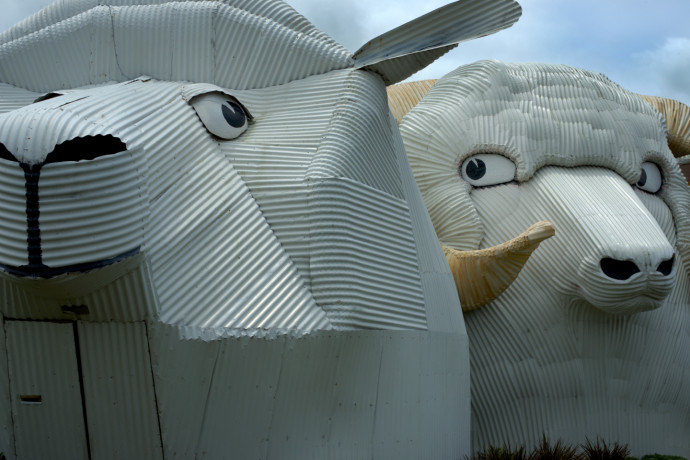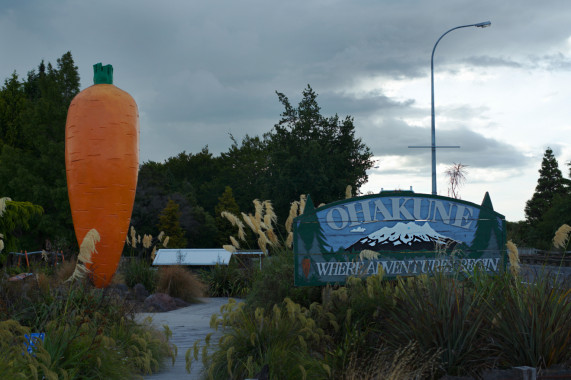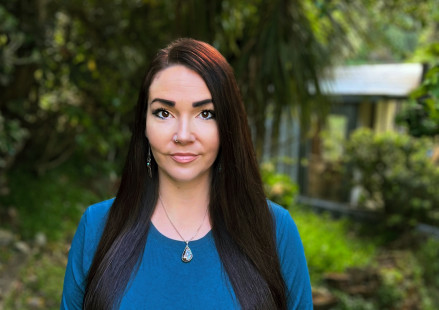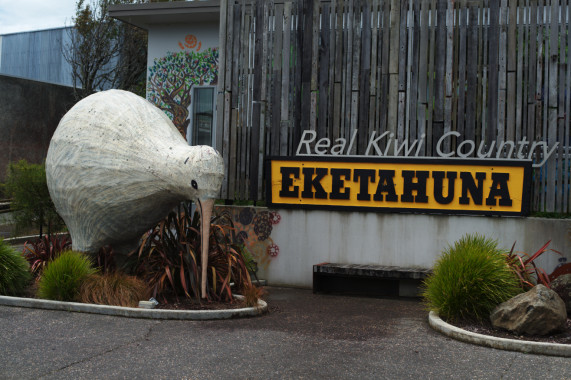Big Things on the roadside: Monuments with meaning or kitsch kiwiana?

Statues tell stories. Anecdotes of rich history and its colourful figures, culture and traditions. But statues can also silence stories. So which stories are told by the seemingly random oversized colourful sculptures dotted across Aotearoa landscapes – and which stories are obscured by their big shadows? Dr Maja Zonjić from Te Herenga Waka Victoria University of Wellington wants to find out
Published on 3 Whiringa-ā-rangi November 2022
The big carrot at Ohakune; the giant kiwifruit at Te Puke; the L&P bottle at Paeroa. During the 1980s economic recession, struggling small towns across Aotearoa started building large roadside sculptures – or Big Things – to sell unique provincial identities and attract passing motorists. Today, there are more than two dozen such sculptures in Aotearoa, frequently visited by travellers on a quick stop-over on their road trips.
Despite their roadside hyper-visibility – and possibly due to their status as ordinary objects – Big Things are mostly invisible in critical scholarly research. However, just like statues of Queen Victoria or James Cook, they could be considered ideological expressions or ‘silent teachers’ that quietly illustrate and reinforce things about the society we live in.

Giant carrot in Ohakune. Image: Supplied
Adopting an approach that focuses on power and historical inequities and injustices, Dr Zonjić will look at how Big Things, which are seemingly innocuous symbols of place, may in fact, provide a means for people to forget settler-colonial histories. Over the course of Dr Zonjić’s Marsden Fund Fast-start project, she will bring a critical gaze to these structures by provoking a new way of thinking about these dominant constructions of colonial objects and the way they obscure land dispossession.

Dr Maja Zonjić, Te Herenga Waka Victoria University of Wellington. Image: Supplied
While most scholarly and media attention is given to extremist forms of nationalism, everyday ‘hidden’ representations of modern nationalism can create powerful systems of beliefs precisely because they are often overlooked. The project seeks to re-centre alternative stories currently hidden in the shadows of the Big Things, culminating in a book and six short films. Internationally, this research provides a timely Aotearoa contribution to contemporary research examining the complex negotiations of decolonising public spaces, and the role that statues, however innocuous they may seem, occupy within them.

Big Kiwi in Eketāhuna. Image: Supplied
